Abstract
1. The noradrenaline concentration in the lung was less than 0·5 μg/g in eight animal species.
2. In the cat, dog, rabbit and goat, tyramine produced a fall in pulmonary resistance, which was reduced by the administration of either reserpine or cocaine. Although an infusion of noradrenaline increased the content of this amine in the lung of the cat, previously depleted by reserpine, the bronchodilator property of tyramine was not restored. The infusion of isoprenaline did not restore the response to tyramine. The role of either catecholamine in mediating the bronchomotor response to tyramine could not be ascertained.
3. The concentration of dopamine was as high as 6·4 μg/g in the goat lung and less than 0·5 μg/g in the lungs of the cat, rabbit, dog, rat, mouse, guinea-pig and man. Dopamine, injected intravenously into the cat, dog, rabbit and goat, produced a slight rise in pulmonary resistance. This increase was blocked by tolazoline, indicating that the response was mediated by α-adrenoceptors in the bronchial passages. No procedure has been observed to influence the dopamine content of the lung. The release of dopamine cannot, however, be excluded until the blood in the bronchial veins has been analysed.
Full text
PDF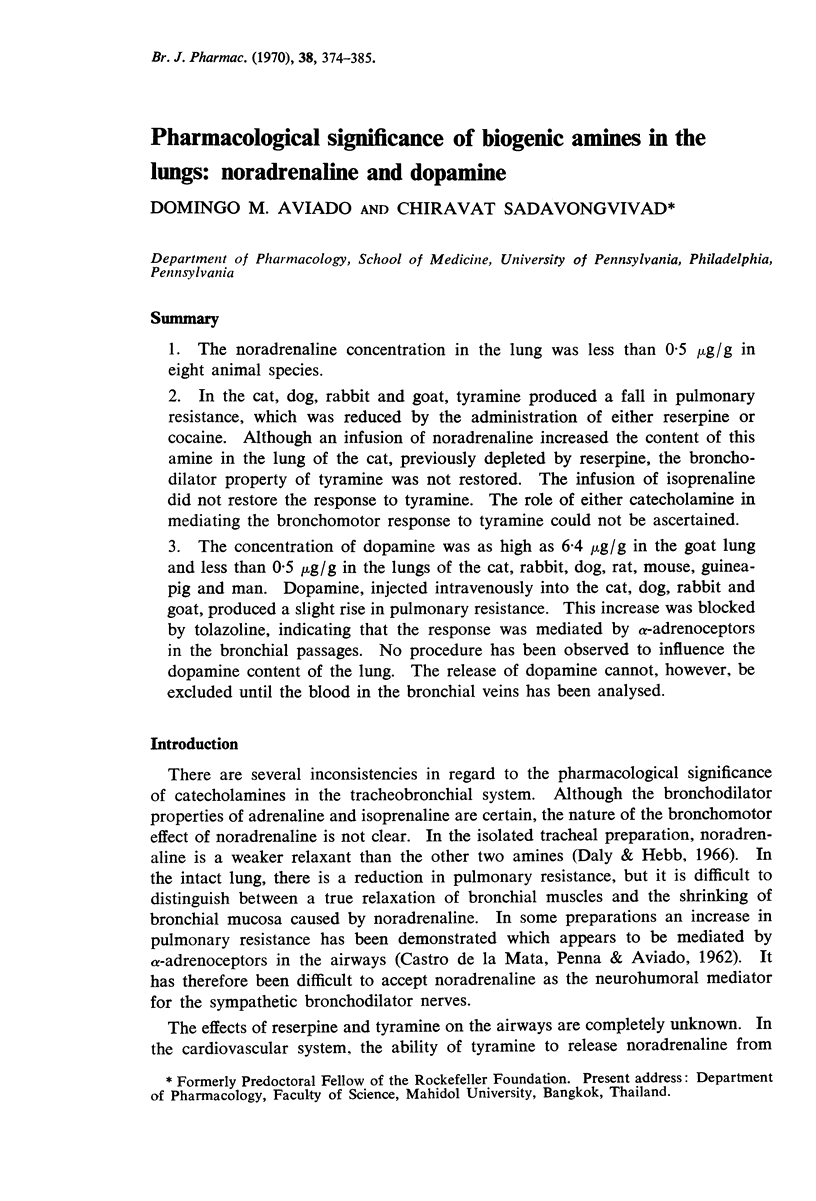
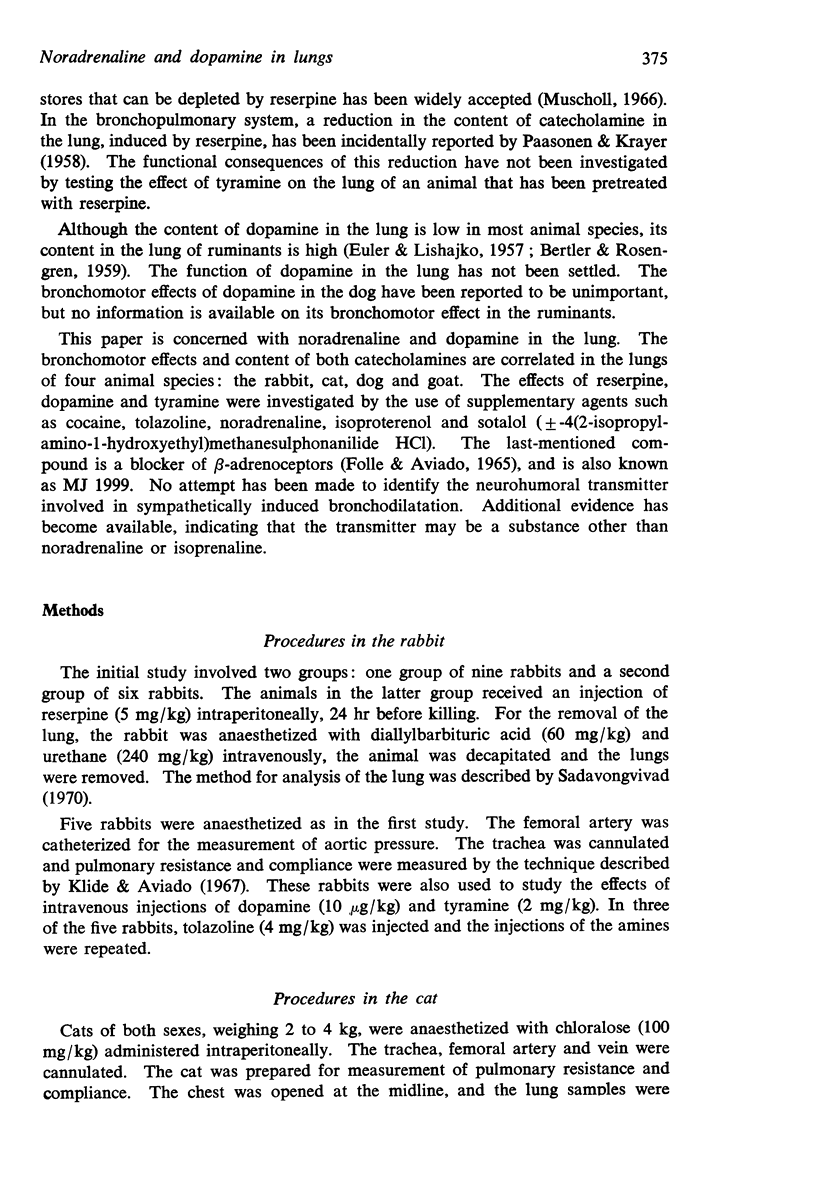
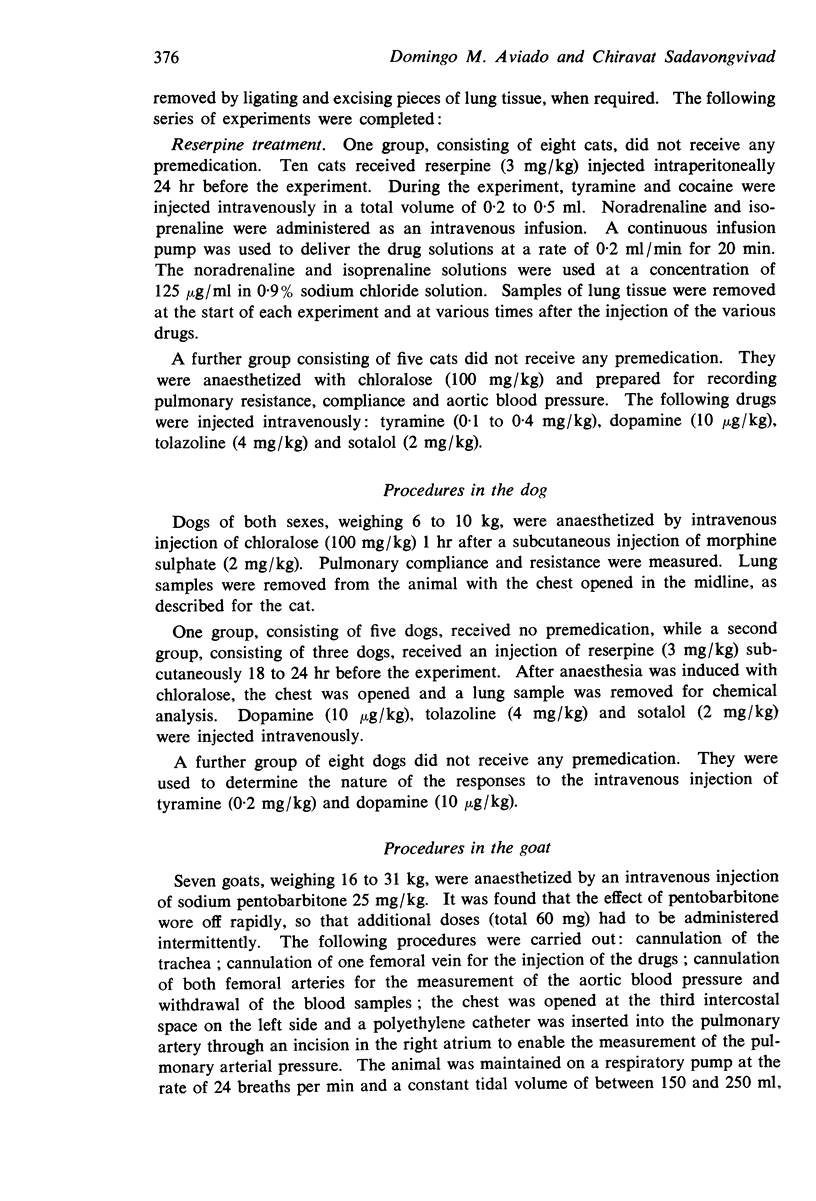
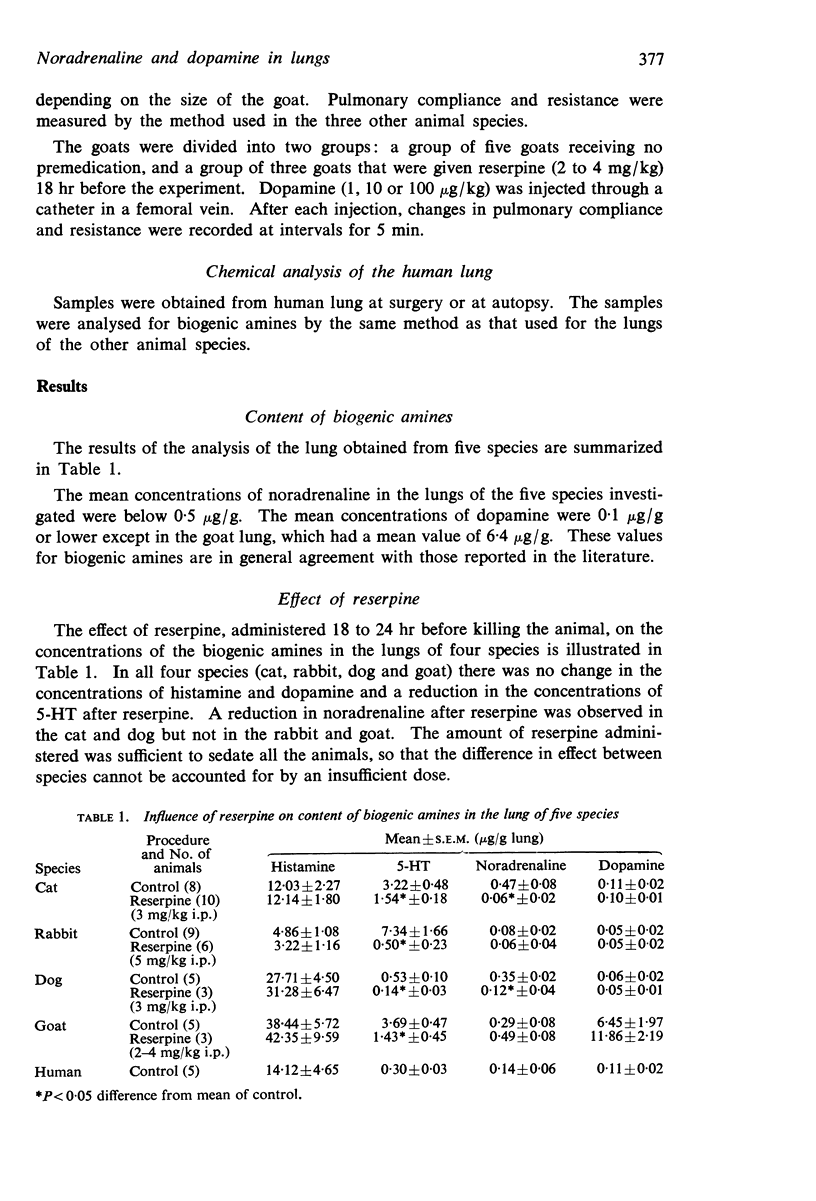
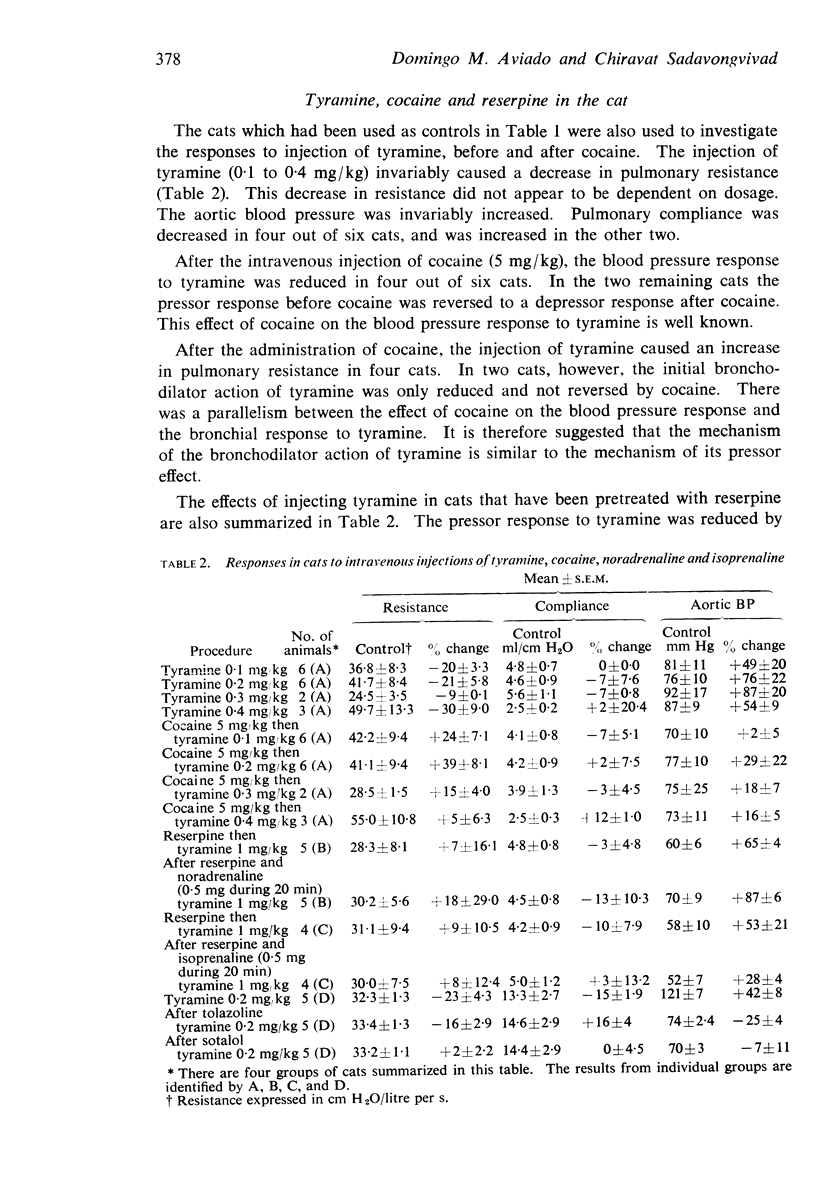

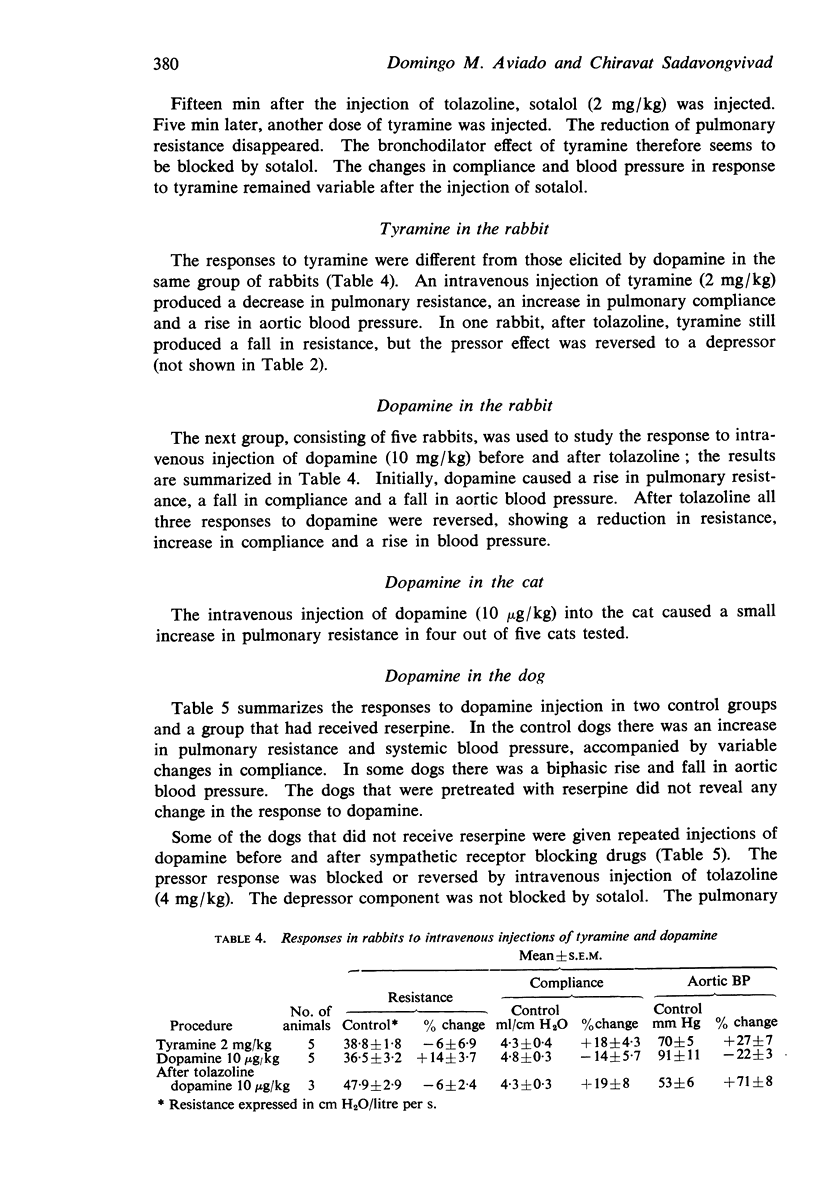
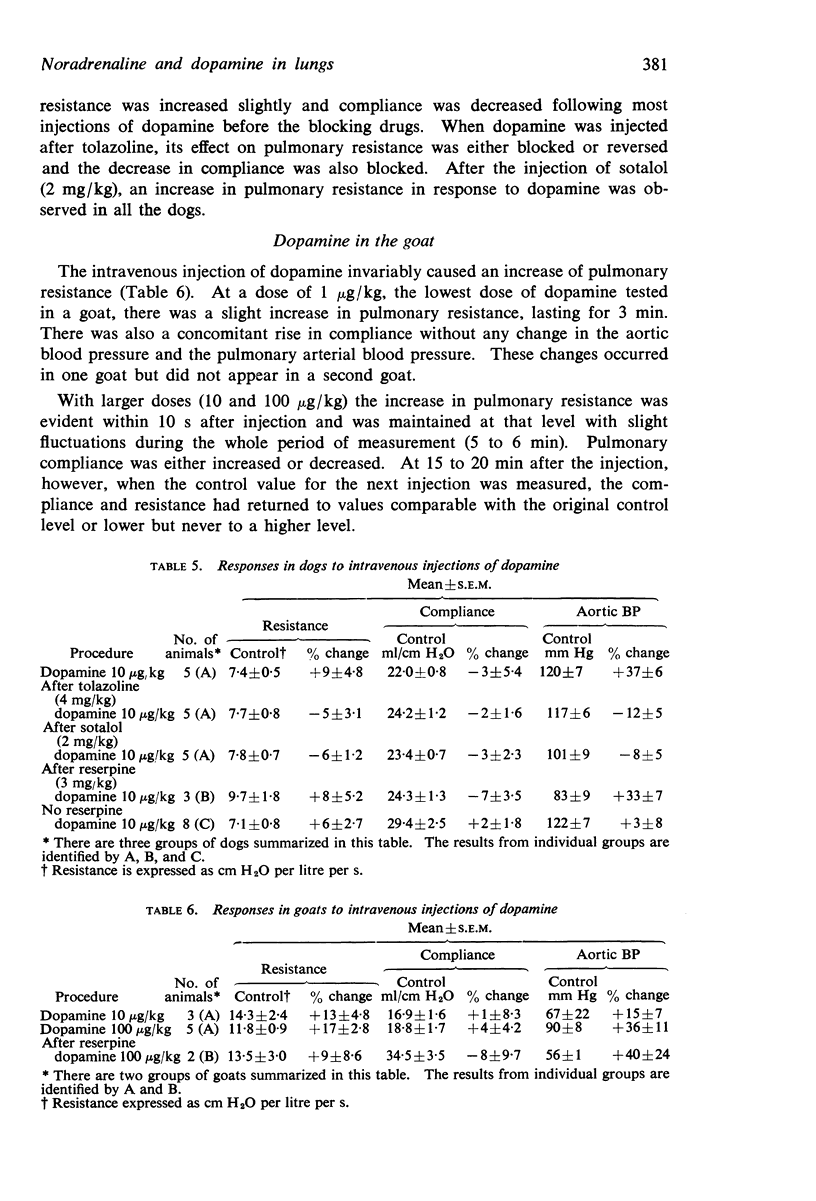
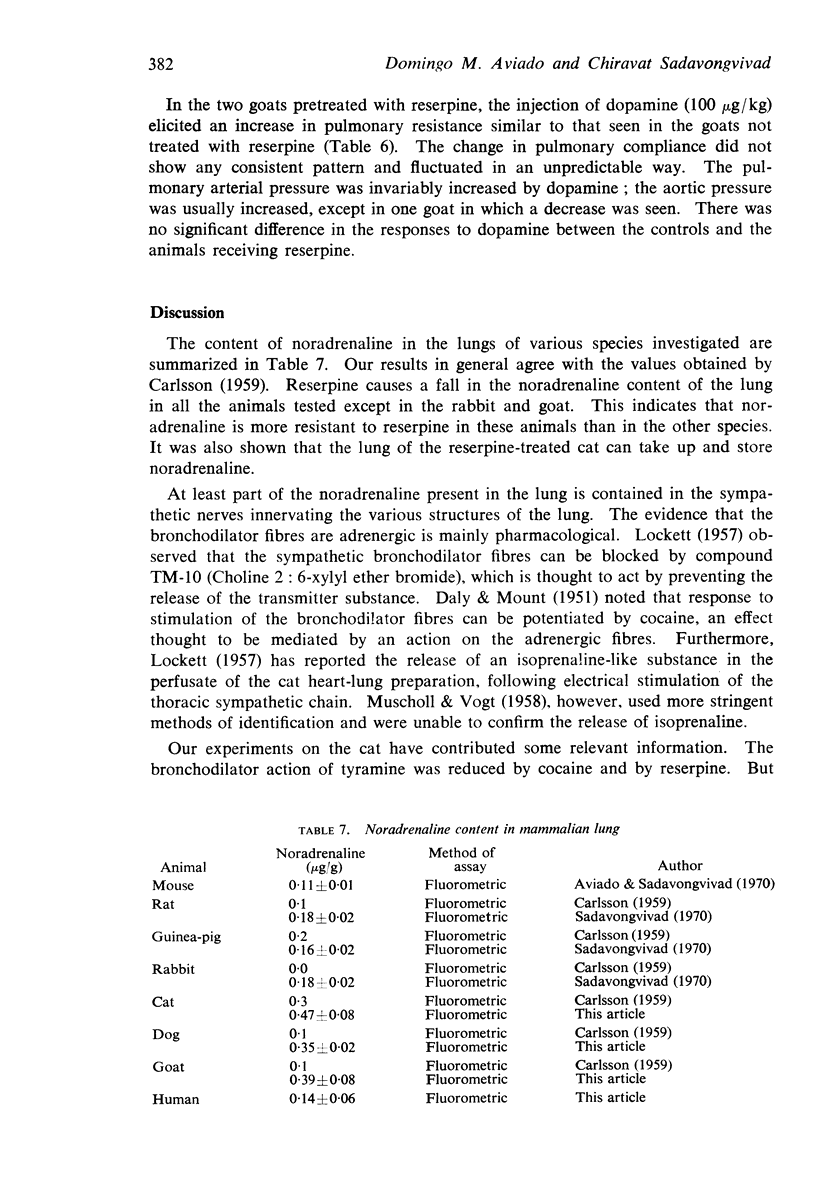
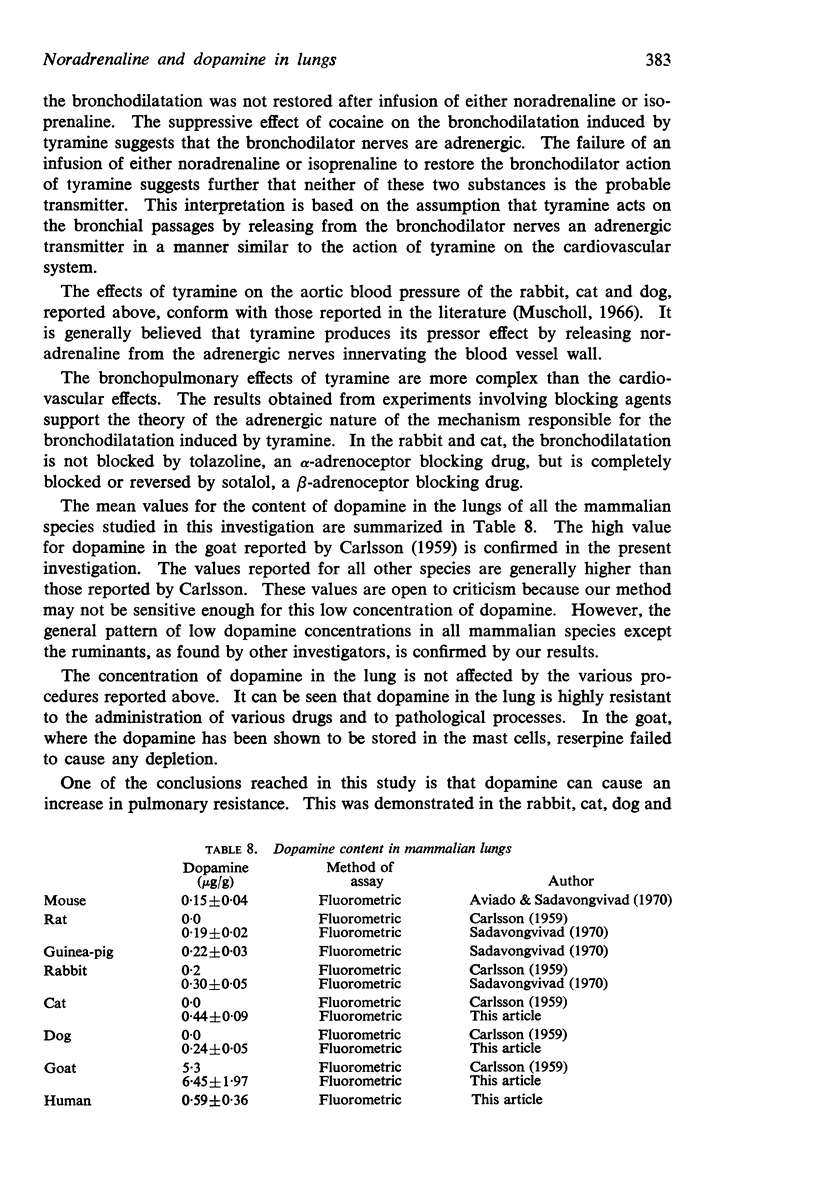
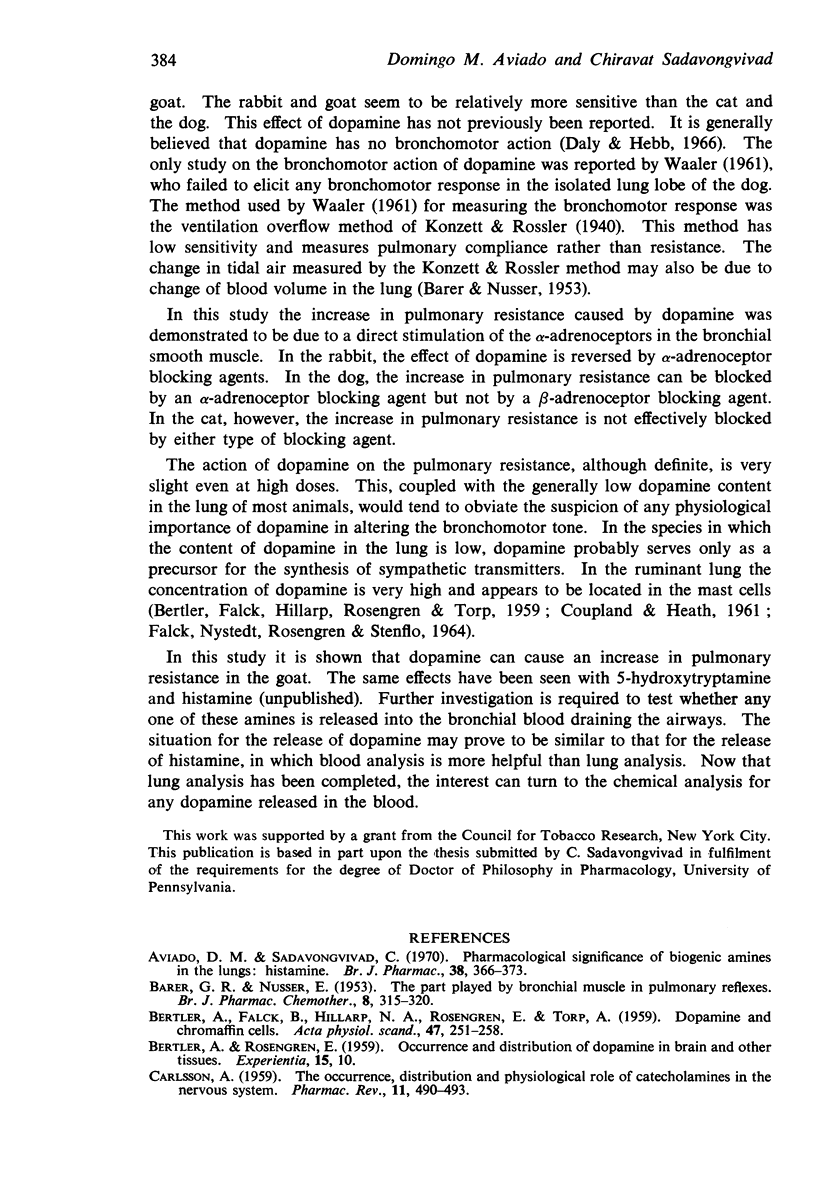

Selected References
These references are in PubMed. This may not be the complete list of references from this article.
- Aviado D. M., Sadavongvivad C. Pharmacological significance of biogenic amines in the lungs: histamine. Br J Pharmacol. 1970 Feb;38(2):366–373. doi: 10.1111/j.1476-5381.1970.tb08524.x. [DOI] [PMC free article] [PubMed] [Google Scholar]
- BARER G. W., NUSSER E. The part played by bronchial muscles in pulmonary reflexes. Br J Pharmacol Chemother. 1953 Sep;8(3):315–320. doi: 10.1111/j.1476-5381.1953.tb00800.x. [DOI] [PMC free article] [PubMed] [Google Scholar]
- BERTLER A., FALCK B., HILLARP N. A., ROSENGREN E., TORP A. Dopamine and chromaffin cells. Acta Physiol Scand. 1959 Nov 15;47:251–258. doi: 10.1111/j.1748-1716.1960.tb00075.x. [DOI] [PubMed] [Google Scholar]
- BERTLER A., ROSENGREN E. Occurrence and distribution of dopamine in brain and other tissues. Experientia. 1959 Jan 15;15(1):10–11. doi: 10.1007/BF02157069. [DOI] [PubMed] [Google Scholar]
- CARLSSON A. The occurrence, distribution and physiological role of catecholamines in the nervous system. Pharmacol Rev. 1959 Jun;11(2 Pt 2):490–493. [PubMed] [Google Scholar]
- COUPLAND R. E., HEATH I. D. Chromaffin cells, mast cells and melanin. II. The chromaffin cells of the liver capsule and gut in ungulates. J Endocrinol. 1961 Mar;22:71–76. doi: 10.1677/joe.0.0220071. [DOI] [PubMed] [Google Scholar]
- DALY M. de B., MOUNT L. E. The origin, course and nature of bronchomotor fibers in the cervical sympathetic nerve of the cat. J Physiol. 1951 Mar;113(1):43–62. doi: 10.1113/jphysiol.1951.sp004555. [DOI] [PMC free article] [PubMed] [Google Scholar]
- DE LA MATA R. C., PENNA M., AVIADO D. M. Reversal of sympathomimetic bronchodilation by dichloroisoproterenol. J Pharmacol Exp Ther. 1962 Feb;135:197–203. [PubMed] [Google Scholar]
- FALCK B., NYSTEDT T., ROSENGREN E., STENFLO J. DOPAMINE AND MAST CELLS IN RUMINANTS. Acta Pharmacol Toxicol (Copenh) 1964;21:51–58. doi: 10.1111/j.1600-0773.1964.tb01768.x. [DOI] [PubMed] [Google Scholar]
- FOLLE L. E., AVIADO D. M. CARDIOVASCULAR EFFECTS OF ANOXIA AND THE INFLUENCE OF A NEW BETA ADRENERGIC RECEPTOR BLOCKING DRUG. J Pharmacol Exp Ther. 1965 Jul;149:79–90. [PubMed] [Google Scholar]
- Klide A. M., Aviado D. M. Mechanism for the reduction in pulmonary resistance induced by halothane. J Pharmacol Exp Ther. 1967 Oct;158(1):28–35. [PubMed] [Google Scholar]
- LOCKETT M. F. The transmitter released by stimulation of the bronchial sympathetic nerves of cats. Br J Pharmacol Chemother. 1957 Mar;12(1):86–96. doi: 10.1111/j.1476-5381.1957.tb01367.x. [DOI] [PMC free article] [PubMed] [Google Scholar]
- MUSCHOLL E., VOGT M. The action of reserpine on the peripheral sympathetic system. J Physiol. 1958 Apr 3;141(1):132–155. doi: 10.1113/jphysiol.1958.sp005961. [DOI] [PMC free article] [PubMed] [Google Scholar]
- Muscholl E. Modification of sympathetic function. Indirectly acting sympathomimetic amines. Pharmacol Rev. 1966 Mar;18(1):551–559. [PubMed] [Google Scholar]
- PAASONEN M. K., KRAYER O. The release of norepinephrine from the mammalian heart by reserpine. J Pharmacol Exp Ther. 1958 Jun;123(2):153–160. [PubMed] [Google Scholar]
- Sadavongvivad C. Pharmacological significance of biogenic amines in the lungs: 5-hydroxytryptamine. Br J Pharmacol. 1970 Feb;38(2):353–365. doi: 10.1111/j.1476-5381.1970.tb08523.x. [DOI] [PMC free article] [PubMed] [Google Scholar]
- VON EULER U. S., LISHAJKO F. Dopamine in mammalian lung and spleen. Acta Physiol Pharmacol Neerl. 1957;6:295–303. [PubMed] [Google Scholar]
- WAALER B. A. Effect of dopamine on the isolated perfused lung lobes of the dog. Br J Pharmacol Chemother. 1961 Apr;16:195–202. doi: 10.1111/j.1476-5381.1961.tb00313.x. [DOI] [PMC free article] [PubMed] [Google Scholar]


